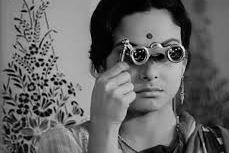On Feminism and the Culture of Science
In modern times science is often seen to be sacrosanct. Is it possible to look at science through the eyes of women—the way it excludes and marginalizes them? Here is a piece of research through which Londa Schiebinger—a professor at Pennsylvania University—encourages us to raise critical questions about science and feminism.
Feminism, it is said, is a critique of patriarchy—its principle of male domination and resultant subjugation of women. Feminism is a language of protest; it is also an aspiration for a gender sensitive society. No wonder, feminism opens our eyes, and makes us see the pathology of many of our cultural practices. But is there anything that feminism can say about science? Science—particularly, physics or mathematics, unlike history or sociology, is thought to be above politics; its self-perception is that it is ‘objective’ and ‘value-neutral’; and hence it cannot have gender biases. However, feminist researchers have begun to interrogate this self-perception of science. It is in this context that Londa Schiebinger’s research acquires special relevance.
Take, for instance, her sharp argumentations on ‘the gendering of science’. The Enlightenment and associated developments in European society led to ‘the privatization of the family and the professionalization of science’. In a way, it promoted the theory of ‘sexual complementarity’. ‘The private, caring woman’, writes Schiebinger, ‘emerged as a foil to the public, rational man’. Men would do science, and women would fulfill the physical needs of heart and soul. To quote Schiebinger: ‘In a scientific age women were to be religious; in a secular age they were to be the keepers of morals; in a contractual society they were to provide the bonds of love.’ In contrast, as the stereotypical image of a scientist would suggest, he was supposed to abandon hopes and fears, loves and hates—the whole subjective, emotional life. And even if a woman dares to enter the domain of science, she has to abandon her ‘femininity’, and neglect her emotive aspects for her mind. We are told that Madam Curie—a popular role model for scientific women—‘conformed to the image of a lonely, introspective scientist, clothed in a simple black dress and with severely pulled-back hair’. Again, like sports, science is seen to be aggressively competitive; science needs ‘macho-ness’. In fact, many physicists like to see themselves as ‘independent, vigorously assertive, and competitive.’ No great scientific discovery, many believe, ‘was ever made in a spirit of humility.’ Not solely that. The language of science became ‘hard’—dissociated from all that is subjective, experiential and metaphorical. For many scientists, poetry was the first and most primitive of three stages of scholarship, succeeded by philosophy and finally science. Here is a brilliant observation made by Schiebinger: ‘Literature was banished from science under the disgraceful title of the ‘feminine’. Equating the poetic
with the feminine ratified the exclusion of women from science, but also set limits on the kind of language male scientists could use.’ It is difficult to deny that ‘the critical nexus between the military, sports, and some fields of science persists today.’ No wonder, for a sociologist like Bruno Latur, the laboratory is like a ‘battalion headquarters at war.’ In other words, there is something implicit in the culture of science that tends to exclude women.
At this juncture, an important question arises: what is it about, say, physics, that so vehemently excludes women? One common explanation is that physics is ‘hard’. Is it hard because it is distant, abstract, quantitative? Is it hard because it studies inanimate things—matter in motion? Is it hard because it demands a high degree of abstract thinking, strong analytical skills, arduous work and long hours? Whatever be the reason, many physicists share the belief that ‘physics is tough, hard, and analytical, not for the faint at heart.’ However, Schiebinger tends to believe that the poor representation of women in physics is not because it is harder conceptually, but rather because of ‘its image, culture, associations, and organizations.’ Big physics, for instance, demands military-like hierarchies, autocratic leaders, committees and big money. And, as we are told, ‘women have not yet been considered prime candidates to direct these or other big science projects.’ As an anthropologist argues, it is not the ‘hardness’ that keeps women out of physics or mathematics but that ‘extra bit of chutzpah, or aggressiveness or assertiveness.’
What makes Londa Schiebinger’s research immensely revealing is her critical engagement with both ‘liberal feminism’ as well as ‘difference feminism’. Liberal feminism sees sameness and assimilation as the only grounds for equality. No wonder, it seeks to add women to normal science, leaving the latter unperturbed. This implies, as Schiebinger argues, that ‘women are supposed to assimilate to science rather than vice versa, and nothing in the culture or the content of the sciences need change to accommodate them.’ It is simplistic. It ignores the fact that unless the culture of science –the way it prioritizes research, socializes scientists, and creates its organizational ethos—is altered, women will continue to be marginalized. As opposed to liberal feminism, ‘difference feminism’ tends to revalue qualities that our society has devalued as ‘feminine’ such as subjectivity, feeling, cooperation and empathy; and its adherents assert that ‘in order for women to become equal in science, changes are needed not just in women but also in science classrooms, curricula, laboratories, theories, priorities and research programs.’ With these ‘feminine’ qualities, it is believed, science would become refreshingly different; it would generate new ways of knowing—‘caring’, ‘holism’ and ‘maternal thinking’. As Carol Gilligan thought, women speak ‘in a different voice’. However, Schiebinger refuses to give her consent to ‘difference feminism’. ‘In romanticizing femininity’, as she argues, ‘difference feminism does little to overturn conventional stereotypes of men and women.’ It is of course possible to think of alternative methods of conducting research; but these need not be related to sex or presumed womanly traits. Moreover, there is no reason to believe that there is a ‘universal woman’ who always speaks ‘in a different voice’. Instead, it is not impossible to find a ‘successful’ woman scientist regarding herself—apparently without irony—as an ‘old boy’. In some cases, as Schiebinger does not hesitate to add, ‘these queen bees even resist nurturing the progress of other women.’ We ought to have patience and realize that since modern science is a product of hundreds years of active shunning of women, the process of bringing women into science will require deep structural changes in the culture, methods, and content of science. There is no easy solution. What is needed is a healthy working relationship between scholars involved in developing gender critiques of science and those doing science. As Schiebinger concludes: ‘Changes will have to happen simultaneously in many areas, including conceptions of knowledge and research priorities, domestic relations, attitudes in preschools and schools, structures at universities, practices in classrooms, and the relationship between home life and the professions.’














